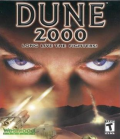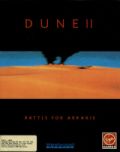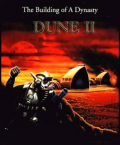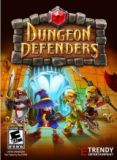Games
Displaying 4121-4130 of 15808 results.
Sega Genesis
Release Date: August 16, 1993 |
Genre: Strategy
Westwood Studios' real-time strategy classic Dune II received a major overhaul when ported to the Sega Genesis. While the basic concept remains the same, the game features all-new graphics, streamlined controls, changes to the tech tree as well as completely new levels.
As in the original game, the player controls the troops of one of three noble Houses, called by the Emperor to mine the Spice Melange on the planet Arrakis, also known as Dune. A series of consecutive battles must be won by mining spice, constructing a base and building units to attack the enemy.
The rather complex menu-based controls of the original game have been replaced by a context-sensitive cursor system, where a unit reacts according to what is below the cursor - either moving to a destination or attacking an enemy unit, for example.
PC
Release Date: December 17, 1998 |
Genre: Strategy
Dune 2000 is a remake of the classic Dune II updated for Windows. In this Real-Time Strategy game, you can play one of the three houses, the evil Harkonnen, the greed filled Ordos or the noble Atreides. Each has different sets of units and tactics while maintaining an overall balance.
Unlike the original, the cutscenes happen after every mission, with live-cast this time, already seen in Westwood Studio's Command & Conquer franchise. A 16-bit color mode was the next step for their RTS genre, boosting up the graphics in Dune 2000.
Everything from the original is back - sandworms, the spice, the Fremen, the known structures and the map of the planet, even the intro cinematic is a 3D enhanced version of the original one.
Each house fights differently. The noble Atreides have air-superiority and rely on their honour and alliance with planet natives, the Fremen. The insidious Ordos rely on guerrilla tactics and superior technology, as well as mercenaries. The evil Harkonnen just go brutal, with no care for lives of their own troops or destruction as longs as they are victorious.
Unlike the Windows version, the PlayStation version of the game is fully 3D.
Amiga
Release Date: Unknown |
Genre:
Dune II is often considered the first mainstream modern real-time strategy game and established many conventions of the genre. Even though set in Frank Herbert's famous Dune universe, the game is only loosely connected to the plot of any of the books or the films based from them. Controlling either of the three Houses, the player must fight a number of battles against the other Houses. In the early levels, the goal is simply to earn a certain number of credits, while in the later missions, all enemies must be destroyed.
The single resource in the game is the Spice, which must be collected by harvesters. The spice is converted to credits in a refinery, which are then spent to construct additional buildings and units. There are two terrain types: buildings can only be constructed on stone, while the Spice is only found on sand. However, units moving on sand attract the large sandworms of Dune, who are virtually indestructible and can swallow even large units whole. As levels progress, new and more advanced buildings and units are made available, including structures like a radar station, a repair facility or defense turrets and, for units, various ground troops, light vehicles and tanks. Each House can construct one unique special unit, and, after building a palace improvement, can unleash a unique palace effect.
PC
Release Date: December 1, 1992 |
Genre: Strategy
The planet Arrakis (also known as Dune for its sandy landscape) is the only place in the known universe where Melange (more commonly known as the Spice) can be found. The Spice is the basis of interstellar travel and thus the standard of the Imperial economy. To increase productivity, The Padishah Emperor has invited three powerful Houses (Harkonnen, Atreides and Ordos) to compete against one another economically and bring up spice production. Competition among these houses begins peacefully but soon turns ugly as they battle each other with armed troops, advanced weaponry, and spies. The planet itself is also hostile, with dangerous sandworms inhabiting the spice fields.
Dune II is often considered the first mainstream modern real-time strategy game and established many conventions of the genre. Even though set in Frank Herbert's famous Dune universe, the game is only loosely connected to the plot of any of the books or the films based from them. Controlling either of the three Houses, the player must fight a number of battles against the other Houses. In the early levels, the goal is simply to earn a certain number of credits, while in the later missions, all enemies must be destroyed.
The single resource in the game is the Spice, which must be collected by harvesters. The spice is converted to credits in a refinery, which are then spent to construct additional buildings and units. There are two terrain types: buildings can only be constructed on stone, while the Spice is only found on sand. However, units moving on sand attract the large sandworms of Dune, who are virtually indestructible and can swallow even large units whole. As levels progress, new and more advanced buildings and units are made available, including structures like a radar station, a repair facility or defense turrets and, for units, various ground troops, light vehicles and tanks. Each House can construct one unique special unit, and, after building a palace improvement, can unleash a unique palace effect.
After a mission is completed, the player can select the next mission on a map of Dune. This choice determines the layout of the next map to be played, but has no effect on the overall campaign.
Sega CD
Release Date: January 1, 1994 |
Genre: Action, Role-Playing
Dungeon Explorer is an action role-playing game. It supports up to four players with a choice of six different character classes: monk, knight, elf, mage, beast and ninja. The game starts in the area surrounding a save point. This area functions as a central hub to access all the six dungeons. If a character leaves it, the food counter starts decreasing. If it reaches zero, the life points start diminishing until the character dies. Food can be found as potions or pots around the mazes. Returning the character to the save point area replenishes all the counters and cures all conditions (like poisoning and confusion). The gold collected in the game can be spent on equipment upgrades at the weapons shop. The tavern allows the player to switch characters.
Sony PSP
Release Date: February 15, 2008 |
Genre: Action, Adventure, Fighting, Role-Playing, Strategy
In Dungeon Explorer: Warrior of the Ancient Arts, players are trained in weaponry and mystical forces and embark on a quest and ready to uncover the fate of a legendary kingdom. DE: WAA features hundreds of variations of weapons, armor and equipment that can be chosen and upgraded throughout the adventure to defeat enemies. Unique for the PSP system, players have the ability to choose their warfare style with more than 150 different kinds of fighting arts, including Big Bang Arts, allowing three players to team up to triple their destructive power in Ad-Hoc Multiplayer mode.







